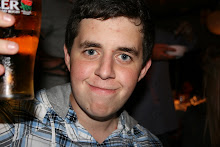It was fundamental for us to challenge and develop the conventions of a real media production through our own. We concentrated on making sure mise -en-scene, editing , camera and sound were all used in the correct format and that each represented the different aspects of our chosen genre correctly. Through research we compared our ideas to other films such as Titanic and My Sisters Keeper which were both successful drama films and saw how they had used different media techniques to represent the traditional conventions of a drama film.
For us research into camera techniques was the most important as this certain aspect of production would be were could show that we have created a uniqueness within our production. When linking shots to genre you have to analyse how each one will come out on screen and what effects they may apply to the audience. Shots such as close-ups and panning allow you to emotion within characters, and this is what we saw throughout our research. Looking into the Titanic we saw a close-up (zooming) used when the character Jack pulled a missing diamond from his coat pocket. What this shot done was create tension but also allowed the audience time to come to terms with what is happening. We felt that we could adopt this shot for our own productions as it would suit the scene were we have our main character Claire going through a scrap book. Another interesting shot we came across was a Tracking shot used in My Sisters Keeper as Katie shows her mother the scrap book she made. What the shoot represented was a passing through time , and as the camera tracked each picture in the book you feel as you are following her journey. This scene was similar to the idea we had on our storyboard and wanted to mirror the effects of it. This is were we had the idea of mixing the two shots together creating an hybrid. By using both the close-up and the tracking shot we were able to build the tension and melancholy atmosphere we wanted while allowing the audience to follow the journey of the pictures. This showed that we had developed the conventions of a drama film as we had created and hybrid of two shots and creating the mix of atmosphere through it.
Mise-en-scene contains many aspects to it , such as costume , location , props and lighting; we needed to make sure we addressed each one if we wanted to show that we were challenging the conventions of a drama film. Location for us was important as we need to make sure it mirrored our character and more importantly reflected her social status. Looking back at our research we saw how the Titanic made the social differences between higher and lower class clear by their surroundings. The higher class had very classy rooms filled with luxurious possessions were as the lower class had only a bed and table. This difference in location allowed you to distinguish between characters and even give you a hint to the type of character they were. This is vital as in drama films you want your audience to become attached to the characters and this is a good way of doing just that. We had decided that we was going to set the scene with the phone conversation in a bedroom as this would allow us to include props such as wallpaper which would reflect our character. We added a small table with a lamp and phone on top , this represents both independence and intelligence as not all 16 year olds have their own phone in there room. When picking out wall paper we had to think about what pattern or picture our character would have on it. Our character belonged to the smart but popular social group so we needed something sophisticated. This led us to pick a pink wall paper with a small pattern printed on it, we hoped this wall paper would both mirror our characters personality and make our audience feel as if they could relate to her. By accomplishing this we are allowing the audience to emotional bonds between them and the characters which is what you should aim for when creating a drama.
Editing techniques are usually associated with action and horror films, but they can be the final part of the puzzle when it comes to the drama genre. Films such as Slumdog millionaire and taxi driver show that a cluster of editing techniques is not always needed to create emotion and atmosphere. When drawing up our storyboard we was unsure how we would challenge the conventions of a drama film through editing, that is until we saw how My sisters keeper opened. It used a montage at the start of the film, showing the young girl at her final stages of life and then switching to when she was healthy. The effect this had was that you gained enough information to start to feel a bond between you and the character Katie. We wanted our audience to be able to do this and we decided we would start our production in the middle and then switch to the beginning. The technique shows that we are trying to develop a relationship between the audience and the characters while challenging the conventions of a real media production.
Subscribe to:
Post Comments (Atom)

No comments:
Post a Comment